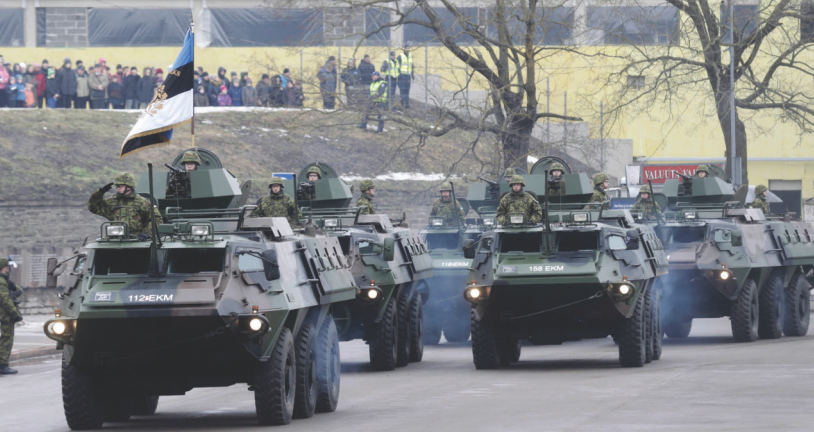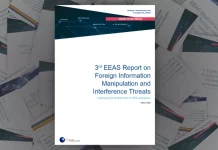By Andrew Radin, RAND
Many policymakers and analysts have expressed concerns about Russian use of “hybrid warfare,” especially against Estonia and Latvia, which have significant Russian-speaking populations. The author of this report analyzes the hybrid threat to the Baltics by dividing potential Russian aggression in three categories: nonviolent subversion, covert violent action, and conventional warfare supported by subversion. The author finds that, given the growing integration of Russian speakers and high capacity of the Baltic states, Russia will have difficulty using nonviolent or covert action to subvert the Baltics absent the use of conventional force, and hence the Baltics’ main vulnerability stems from Russia’s local superiority in conventional forces. While improving the conventional deterrent in the region is important, the United States and its NATO allies should also address the potential for all forms of Russian aggression across the conflict spectrum. To this end, the author recommends an improved strategic communications campaign aimed at Russian speakers, measures to strengthen the Baltic states’ security forces, and ensuring that any NATO deployment in the region does not unintentionally increase the potential for Russian subversion or miscalculation.
Research Questions
- How can the concept of Russian hybrid warfare best be understood?
- What forms might Russian hybrid warfare in the Baltics take?
- What are the major vulnerabilities of the Baltic states to Russia?
- How can the United States, NATO, and the Baltic states deter and defend against Russian hybrid aggression?
Document Details
- Copyright: RAND Corporation
- Availability: Available
- Print Format: Paperback
- Paperback Pages: 58
- List Price: $18.50
- Paperback Price: $14.80
- Paperback ISBN/EAN: 9780833095589
- DOI: 10.7249/RR1577
- Document Number: RR-1577-AF
- Year: 2017
Key Findings
The Potential for Russian Hybrid Aggression
- The term hybrid warfare has no consistent definition but generally refers to deniable and covert actions, supported by the threat or use of conventional and/or nuclear forces, to influence the domestic politics of target countries.
- Potential Russian hybrid aggression in the Baltics can be divided into three categories: nonviolent subversion, covert violent actions, and conventional warfare supported by subversion.
- Given the gains in standard of living and increasing integration of many Russian speakers in the Baltics, Russia will likely have difficulty using nonviolent tactics to destabilize these countries.
- Russian covert violent action is also unlikely to succeed on its own, given preparations by the security forces of Estonia and Latvia.
- The main vulnerability of the Baltics therefore lies in Russia’s local conventional superiority: A large-scale conventional Russian incursion into the Baltics, legitimized and supported by political subversion, would rapidly overwhelm NATO forces currently postured in the region.
Recommendations
- The United States and NATO should pursue the development of a more sophisticated and subtle strategic communication campaign, beginning with support for Russian-language television stations backed by the Baltic country governments.
- NATO should do more to strengthen the Baltic countries’ security forces and thereby reduce the potential for Russian covert action.
- The United States and NATO should take action to mitigate the risks that a NATO deployment in the Baltics will increase the potential for low-level Russian aggression. To this end, the United States and NATO should avoid basing forces in Russian-dominated areas, should consider measures to increase transparency or avoid the perception that deployed forces may be used to pursue regime change, and should develop a sound public relations campaign to convince local Russian speakers that NATO is not deploying forces against them.
Table of Contents
-
Chapter One
Introduction
-
Chapter Two
What Is Hybrid Warfare?
-
Chapter Three
Hybrid Scenarios
-
Chapter Four
Policy Implications
Download eBook for Free
| Format | File Size | Notes |
|---|---|---|
| PDF file | 1.3 MB |
Technical Details »
|
By Andrew Radin, RAND
The research described in this report was was sponsored by the Director, Plans, Programs, and Analyses, Headquarters United States Air Forces, Europe and conducted within the Strategy and Doctrine Program of RAND Project AIR FORCE.
This report is part of the RAND Corporation research report series. RAND reports present research findings and objective analysis that address the challenges facing the public and private sectors. All RAND reports undergo rigorous peer review to ensure high standards for research quality and objectivity.





